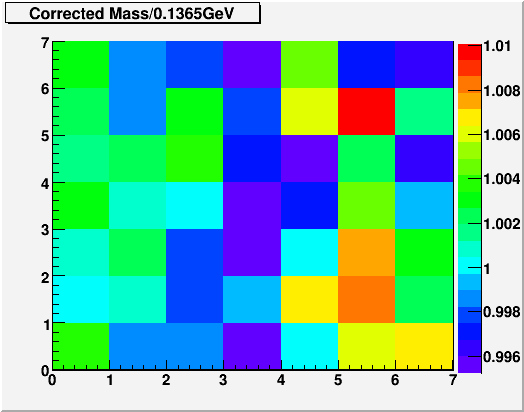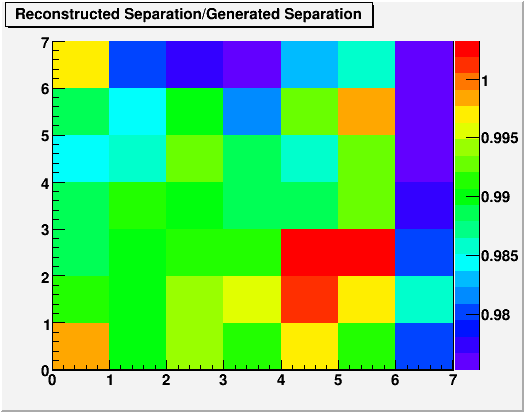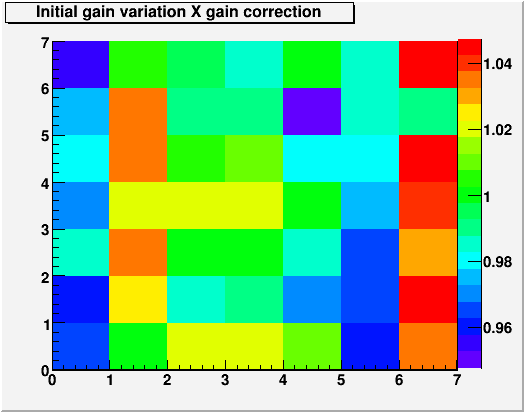- leun's home page
- Posts
- 2013
- 2012
- December (2)
- October (3)
- September (2)
- August (1)
- July (4)
- June (4)
- May (2)
- April (3)
- March (5)
- February (5)
- January (5)
- 2011
- December (3)
- November (3)
- September (5)
- August (2)
- July (2)
- June (3)
- May (4)
- April (4)
- March (2)
- February (4)
- January (2)
- 2010
- December (2)
- November (3)
- October (3)
- September (5)
- August (6)
- July (2)
- June (4)
- May (3)
- April (4)
- March (4)
- February (2)
- January (4)
- 2009
- 2008
- October (1)
- My blog
- Post new blog entry
- All blogs
FMS meeting 20100503
Cell by Cell Gain Calibration with Simulation
As discussed last week, I have been iterating on the simulation set that had 5% random gain variation built in. Initially I assigned mass peaks to only the cells that had the higher energy photons, but after the 4th iteration I started using the location of the lower energy photons as well. The reasoning behind this was to 1. increase the statistics and 2. in principal energies of the both photons should have the same fractional effect on mass.
Fig. 1. Progress of the calibration

Fig. 2 Corrected Gain Distributions

Some observations;
1. After 4 iterations, most of the masses come in wihtin 1% of the target value. However, at this point the gain variations are still ~2.5%, due to the rather complicated systematics coming from the separation and energy sharing. These quantities apparenlty also depend on the cell by cell gain, but the effects seem to quite confusing.
2. Adding the second photon in the mix initially seemed to make things somewhat better, but at the end I'm not sure if it is an overall improvement beyond adding more statistics. On the other hand, since stats are limited in data for the colder cells, it's not nothing. Nevertheless, some cells actually got much worse after I threw in the 2nd photon, most notably channel 39.
3. More iterations are coming, but at this point it seems that the algorithm will find a way to equalize the masses without correcting the cell by cell gain by no better than a few percent.
After the 7th iteration, here are how the usual variables of interests are looking like cell by cell.
Fig. 3.

Fig. 4. Mass

Fig. 5. Separation

Fig. 6. Energy Sharing

Fig. 7. Gain Variation times Gain Correction (should be 1 in a perfect world)

THE END
- leun's blog
- Login or register to post comments
